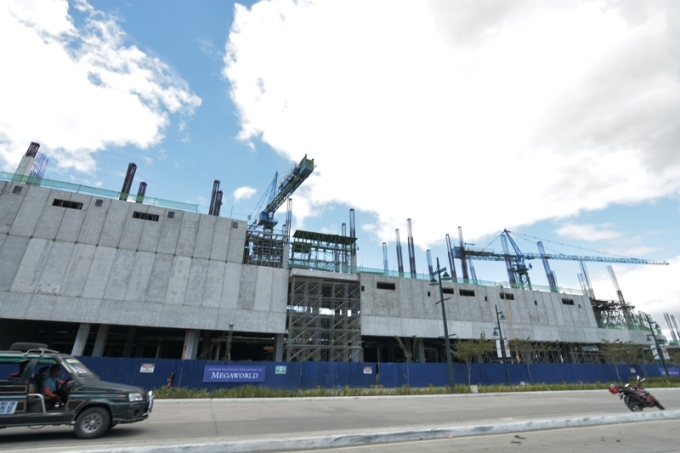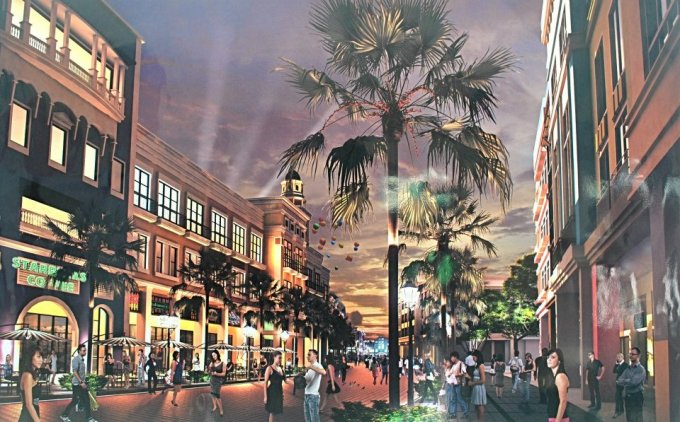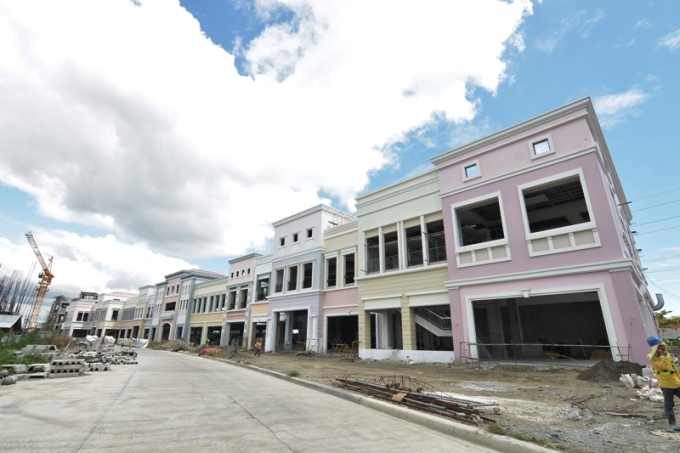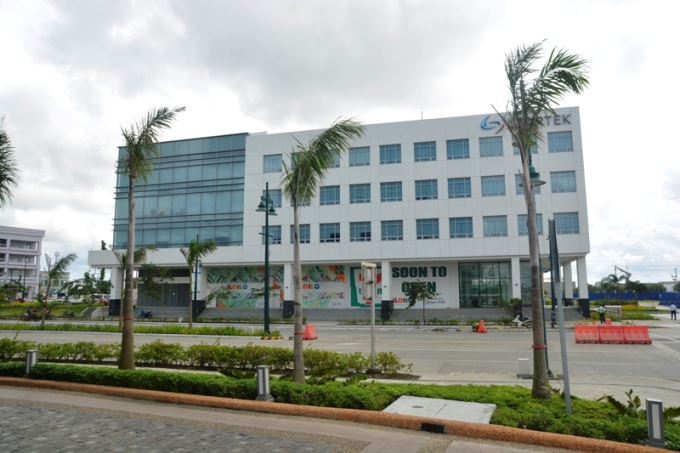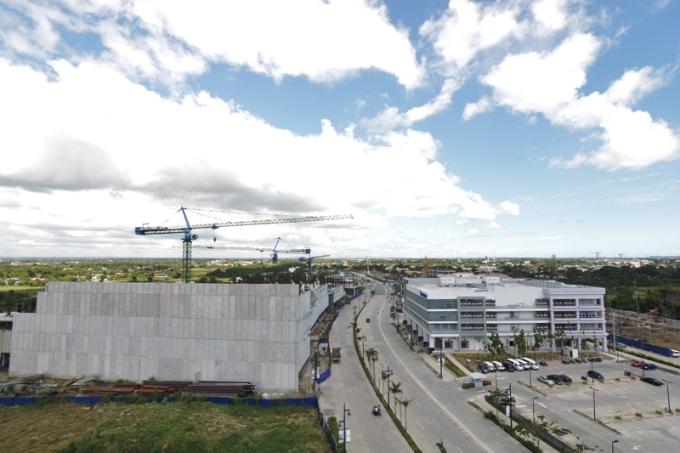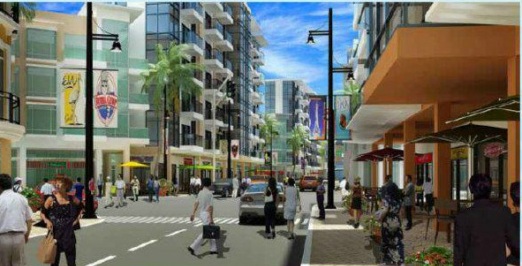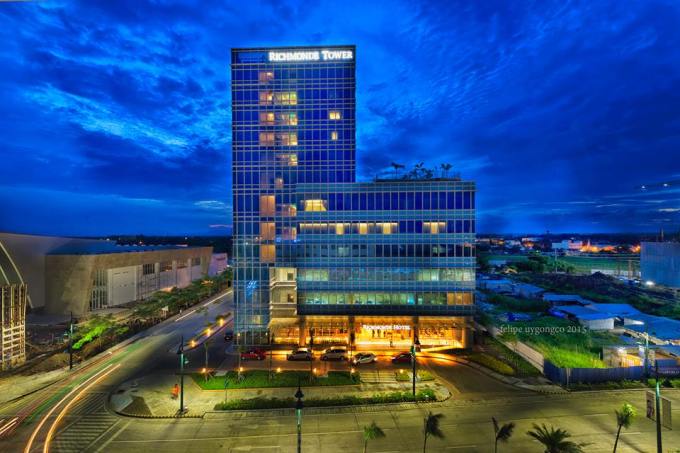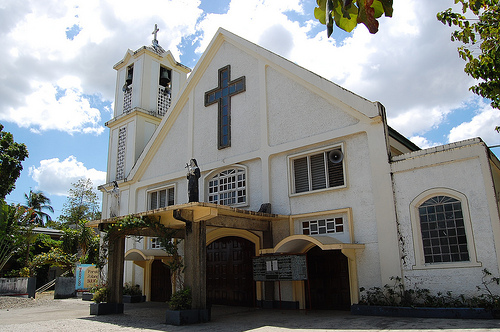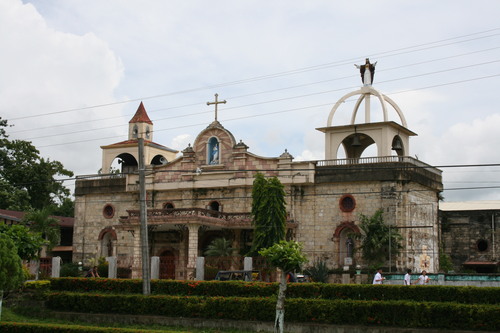Text by Bombette G. Marin
Photos by Ray Tabafunda, Jun Fuerte, Bernard Supetran and Vincent Angelo Gefes
Iloilo was one of the most exquisite jewels of the times of Colonization in the Philippines. In the 19th century, it was known to be the biggest province in the country in terms of population, income and economic production. It is a mix of different cultures, Spanish, Chinese, American and Japanese influences have produced interesting fusions in all artistic expressions. It is a heritage mosaic and this richness is reflected in its historic structures.
Today, Iloilo is a First-Class province where the modern lives side-by-side with the Colonial. Many people thrive in the area, attracted by its sense of history and cosmopolitan feel. It is a province that makes you want to go exploring, to discover whatever might appear in every neighborhood, on every street. It is a safe and friendly province with so much to see. It is an ideal place to spend a few days or as a starting point for touring the rest of Western Visayas. It is old. It is modern. It is, without doubt, always surprising.
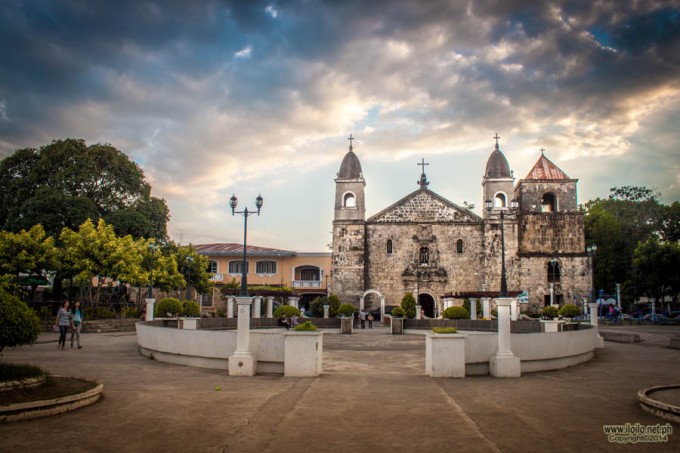
- JOHN OF SAHAGUN PARISH Church in Tigbauan, Iloilo is of Mexican plateresque architectural style. The first church was made of sandstone and coral, it was said to be so strong that it withstood a powerful earthquake in July 13, 1787. The present church along with its convent was built by Father Fernando Martin in 1867. It is said to be a reconstruction of the “parochial church.” It is a one-of-its-kind in the Philippines because of the lavish piling up of its surface ornamentation especially with its stone carvings. In 1975, a historical marker of the National Historical Institute was placed on its churchyard identifying the site where the first Jesuit boarding school for boys in the Philippines was established. In 1994 the interior of the church was renovated with a wide array of carefully laden tile mosaics.
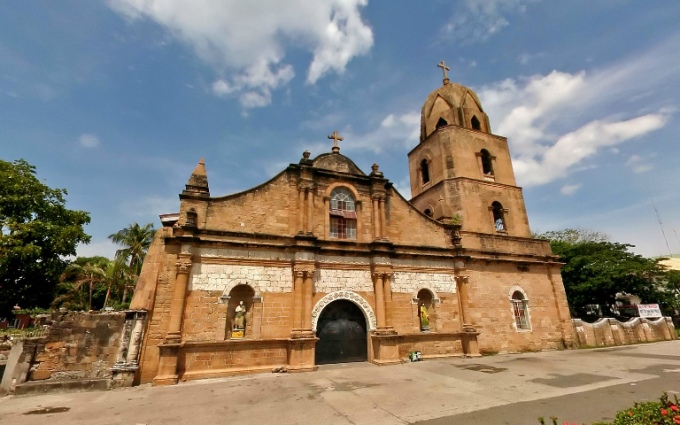
- NICOLAS OF TOLENTINE PARISH Church in Guimbal, Iloilo is of Baroque architectural style. The first church was built in 1774 with its outside walls made of yellow sandstone. The church was destroyed in an earthquake in July 13, 1787. It was reconstructed in 1893 but was burned in December of 1895. Father Agustin Llorente restored the church and started building its tower in January of 1896. It has undergone some reconstruction after it was destroyed twice, during the Second World War and during the 1948 Lady Kaykay earthquake.
BANTAYAN or Moro watchtower is one of the most valuable ruins built in Guimbal in the 18th century. They have lasted for hundreds of years with remarkable strength. The town has four such towers that remain to this day.
- JOHN THE BAPTIST PARISH Church in Igbaras, Iloilo was constructed in 1784 and wasoriginally made of yellow bricks. It has a beautiful convent that was constructed in 1795. The materials used were quarried from the mountains of Igbaras but was destroyed by a flood. Another church was built under the supervision of Father Ignacio Marcos and the convent was under the supervision of Father Celestino Fernandez. However, both were destroyed by Lady Kaykay earthquake in 1948. Though now in ruins, it is still famous for its altar which was transformed into a grotto of the Blessed Virgin Mary. Portions of the original belfry had been converted into an Adoration Chapel.
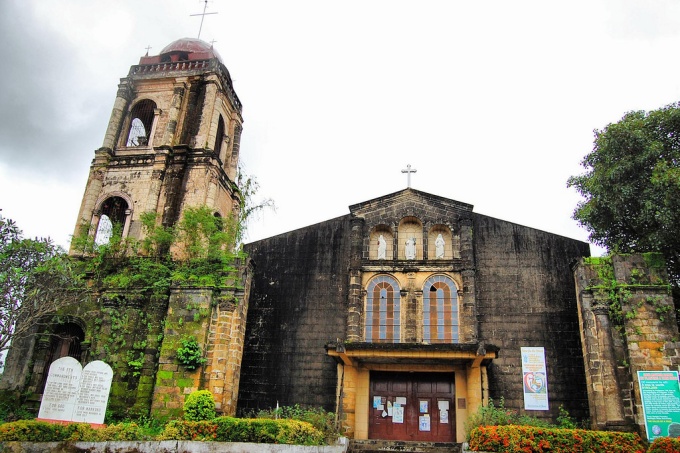
- ANTHONY THE ABBOT PARISH Church in Tubungan, Iloilo is of Romanesque architectural style. The present church was built in 1844 using adobe stones that were found in the rivers and hills around the area. It was however destroyed during World War II. In 1947 the ground floor of the old church was cemented. However it was totally ruined after the 1948 Lady Kaykay earthquake. A new church was built using bamboo. However, in 1951 it was replaced with a wooden structure. The belfry was constructed in 1958 and completed in 1960. The parish was turned over by Mill Hill missionaries to the seculars In Aril 23, 1962. The construction of the present church was initiated by Father Sagra in 1978.

- THOMAS OF VILLANOVA PARISH Church in Miagao, Iloilo is of Baroque-Romanesque architectural style. The original church was built in 1734in a lowland plateau by the sea called Ubos. However, it was burned by Muslim pirates in 1741 another church was built from 1744 to 1750 but was again burned by the Muslim pirates I 1754. The present church is the third structure built under the supervision of Father Francisco Gonzales Maximo in 1786 and completed in 1797. It boasts of its native façade with a unique explosion of botanical motif: coconut, banana, papaya tree and a stylized guava tree. Its centerpiece is San Cristobal in rolled pants carrying the child Jesus. The church is made of huge stone blocks quarried in SitioTubog, San Joaquin and in the mountains of Igbaras. Its new site is in Tacas which gives a commanding view of the mouth of Miagao River, the usual route of the pirates when entering the town. The present church sinks six meters deep in the ground with walls 2.5 meters thick including the outside buttresses. In February 16, 1963 a historical marker by the National Historical Institute was placed on the church and was declared a National Shrine through Presidential Decree No. 260, dated August 1, 1973. In 1993 it was included in the World Heritage List, the only one in the Visayas and Mindanao.
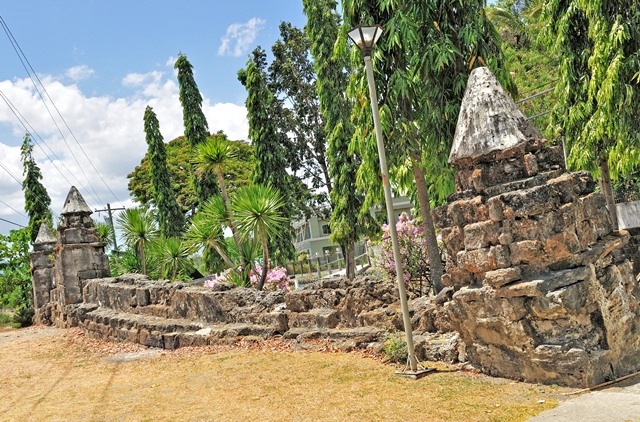
TAYTAY BONI in Barangay Igtuba, Miagao, Iloilo is an old stone bridge about a kilometer away from the poblacion. Named after BoniNeular, the construction foreman and major carpenter, it was constructed in 1854. Made of stone blocks locally known as tablea, each block measured 12 inches in length and 6 inches in width and is 3 inches thick. The bridge is approximately 43.81 meters long and 6.71 meters wide with an area totaling to 233.58 square meters. It is six meters high with walls a meter thick. Its waterway is said to have a dimension of 2.44 meters high and 2.74 meters wide. The bridge connected Miagao to neighboring Guimbal was still used after World War II but was damaged in 1948 by the Lady Kaykay earthquake that resulted to its destruction.
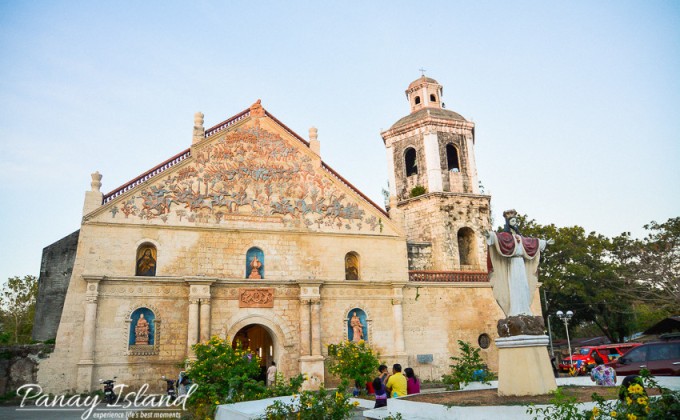
ROMAN CATHOLIC CHURCH OF SAN JOAQUIN in San Joaquin, Iloilo is of Baroque architectural style.The first church was said to have been finished earlier than 1850. The present church was built on the same foundation with the old church in 1869 under the supervision of Father Tomas Santaren. Considered as the most militaristic church in the Philippines, the pediment’s bass relief sculpture entitled “Rendicion de Tetuan” commemorates the 1859 victory of the Spanish over the forces of Morroco in Tetuan, North Africa. The sculptureswere so intricate that even the expression of wounded soldiers is visible. The church was made from gleaming coral stone called “sillar” that were rectangularly shaped into a given dimension. Skilled masons and craftsmen, famous sculptors and painters from Spain and Mexico were employed to work for the construction of the church. The limestone used in the construction of the church is found along the seashores on Punta Talisayan, Punta MalagtingTubus, Talus and Sinugbuhan in San Joaquin. It was declared as a Historical Landmark in 1974.
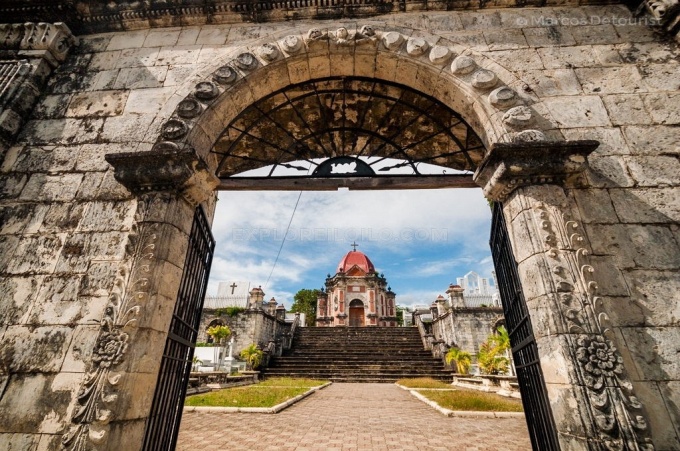
ROMAN CATHOLIC CEMETERY OF SAN JOAQUIN in San Joaquin, Iloilo is of Neo-Gothic architectural style. It was built in 1892 under the leadership of Father Mariano Wamba. This coral stone walled cemetery with an iron gate is fenced by wrought iron with walls of carved stone. The two pillars supporting the decorative archway were ornately carved with flowers and tendrils showing the influence of Gothic architecture. Its 20-steps ascending stairway is flanked a stone balustrade on both sides leading you to the grandiose hexagonal mortuary chapel popularly known as "Camposanto."
SANTA MONICA PARISH Church in Pavia, lloilo is of Romanesque-Byzantine architectural style. The original church was built under the supervision of Father PolicarpioMinayo sometime in 1864-1873. It was made of wood and bricks. Reconstruction of the church was under the supervision of Father Antonio Fermentino in 1888 and was finished in 1890. More reconstruction was done under the supervision of Father Lazaro Ramirez until 1899 and was finally open for public worship in the same year. It was used as a Japanese garrison during World War II. Filipino guerillas also raided the church where it was badly destroyed. Restoration of the church started in 2003 and was finished in 2011.
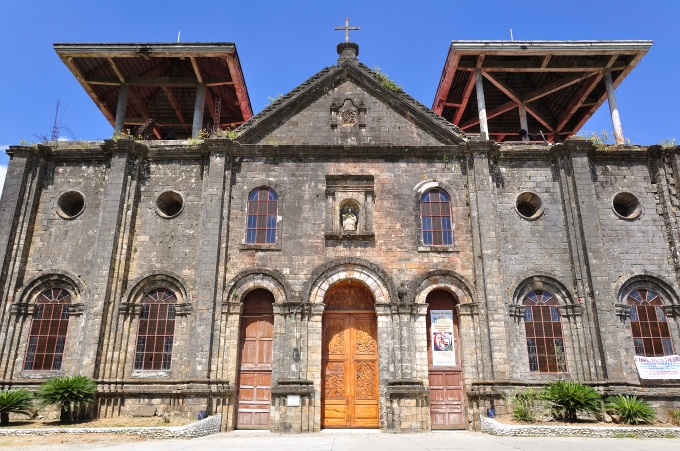
- CATHERINE OF ALEXANDRIA PARISH Church in Leon, Iloilo is of Doric and Byzantine architectural style. The present church was constructed around 1876 after the original town site in Camando was transferred in 1863 to its present site. Known to be the biggest stone edifice in Panay during its time, it measured 100 feet high and 300 feet long. It almost covered two streets of the town. The stones used were quarried from the hills of this town and were shaped into slabs shaped into parallelograms measuring of 1 x 2 feet.The interior is of Renaissance-Romanesque architectural design with walls three and a half feet thick and five feet in height for each post that soared up to 32 feet to its roof. Big and long timbers from Negros were the support of the naves. The timbers of 100 feet long were rafted to Tigbauan, Iloilo and were hauled individually by 10 carabaos to the church site. The church was burned during World War II and was transformed into a garrison for the Japanese Imperial Forces.
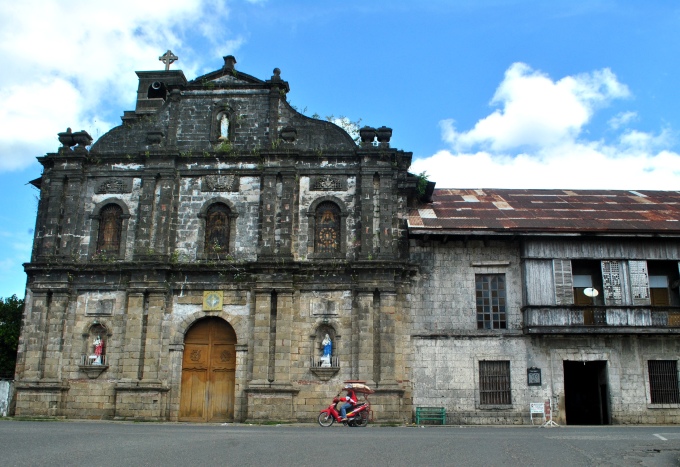
SANTA BARBARA CHURCH AND CONVENT in Sta. Barbara, Iloilo is of Baroque-Renaissance architectural style. The first church was built same time it became an independent parish in 1760. It was destroyed during the 1787 earthquake. The present church was constructed in 1849 and was finished in 1878. The convent was built the same time as the church. It measures 63 meters in length and with a width of 19 meters. Materials used in the construction of the church and convent were of adobe and coral stones quarried from Alimodian and were used for the flooring, walls and posts. Materials transported to the town by carts drawn by carabaos. Red bricks were also used. Connected to the side door of the church is its L-shaped convent of Antillan architectural style. The church served as the headquarters for the Ilonggo Revolutionary Forces in Western Visayas under General Martin Delgado in 1898. It was untouched during World War II and had withstood the 1948 earthquake. It was declared as a National Historical Landmark by the National Historical Institute in 2013.
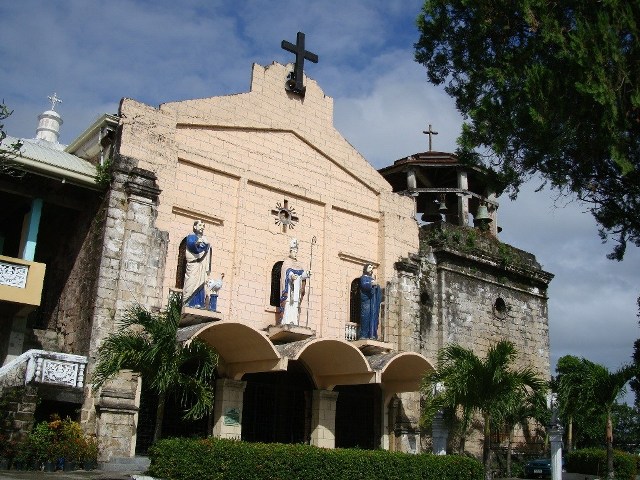
- THOMAS OF VILLANOVA PARISH Church in Alimodian, Iloilo is of Baroque architectural style. The first church was built sometime in 1700 was destroyed by an earthquake in July 13 1787. The present church was built on the same foundation with the old church in 1859. The stones used in the construction of the church were taken in Camando (Leon). The belfry of the church was one of the tallest and the most beautiful in Panay and Negros during its time. It had seven bells and was said to give the loudest and most melodious sound. The convent was completed in 1868 and was just as big as the church though longer in length. However, in April 16, 1942, it was looted and burned. The 1948 Lady Kaykay earthquake rocked the church totally destroying its convent and about 2/3 of its belfry. It was then abandoned. It was in 1951 when the ruined church was renovated and opened for public worship in December 22 of the same year.
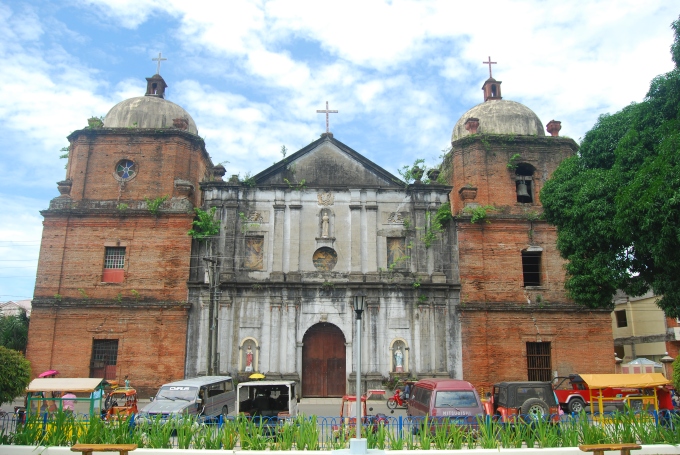
- NICOLAS OF TOLENTINE PARISH Church in Cabatuan, Iloilo is of Neo-Classical architectural style. The first parochial church was finished in 1732, same year when it became an independent parish. The present church was constructed in 1834 and was finished in 1866 using bricks. Minor restoration was done in 1890. Known to be one of the most beautiful churches in Iloilo during its time and described as the “Model of Temples” by El Eco de Panay. Every side of the church was a façade in itself. It is said to have looked more of a Basilica than of a church. It was accented by three domes where at each side of the church were big clocks and the last dome was at its center over the altar. The church measures 50 meters in length and 20 meters in width. Its thickness was about a meter ad a half. It used to have 19 circular, multi-colored window panes and 10 massive doors. Its altar was flanked by two smaller altars. Its belfry had four windows with four big bells. On its ceiling were paintings of Rome and chandeliers. It was known to be the Largest Brick Church in Panay. In 1942 it was burned by guerillas was totally destroyed by Japanese forces the following year. The bricks and the stones of the church were used to repair the landing field in Tiring. The front portion of the church however was not damaged.
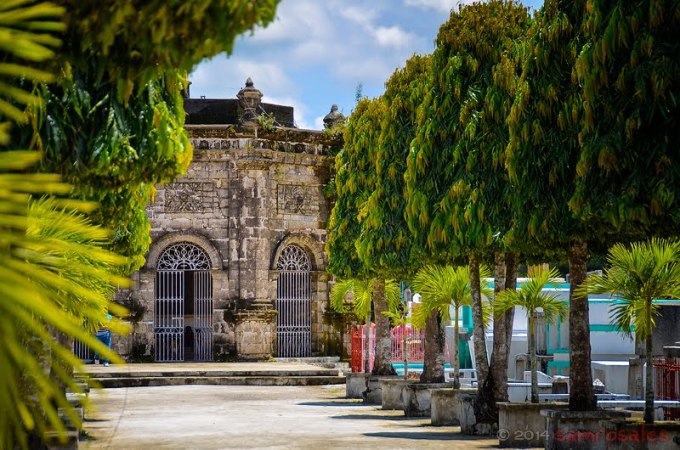
CABATUAN ROMAN CATHOLIC CEMETERY in Barangay Banguit, Cabatuan, Iloilo is a four hectare perfectly square shaped cemetery constructed in 1886 and finished in 1890. With elegant iron grills, its walls and chapel were made of stones quarried from the mountains in Leon. It was heavily damaged during the 1948 Lady Kaykay earthquake and was reconstructed.

ROMAN CATHOLIC CEMETERY OF JANIUAY is of Gothic architectural style. It was constructed in 1874 under the supervision of Father Fernando Llorente and was finished in November 20, 1884. It was blessed by Archbishop Pedro Payo of Manila. It was known to be the most artistic cemetery in the Philippines. Under the direction of Don Placido Marin, it was built on a hill with three individual grand stairways leading to three individual grand arched entrance gates of massive stone slabs. Its Gothic columns were decorated with 16 stone images of saints rising six-feet in height. It had a 7 feet x 4 feet stone cross of Byzantine style found rising on its main gate. It had a chapel at the center. The cemetery was fenced by steel and stone columns using slabs of stones that were quarried from the mountains in Dingle, a town in central Iloilo 27 kilometers away from Janiuay. It is said that around 200 men worked for the construction of the cemetery.
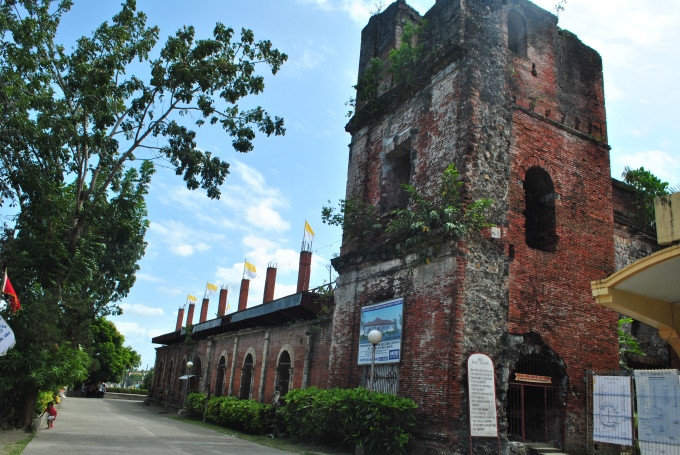
RUINS OF SAN JULIAN PARISH Church in Janiuay, Iloilo is of Neo-Classical architectural style. The first church was said to have been built in 1761 under the supervision of Father Juan Aguado and was continued by Father Jose Gorrosari in 1769. The present church was constructed under the supervision of Father Miguel Carod who served the parish from 1830 – 1871. Red bricks were used and other materials were gathered as far as Guimaras. The convent was constructed under the supervision of Father Nicolas Gallo. It measured 75 meters long and 16 meters wide. The church was burned by Filipino guerillas during World War II. The bricks from the ruins were used by the Japanese to construct their Landing Field in Tiring, Cabatuan. The church and the convent were never reconstructed.
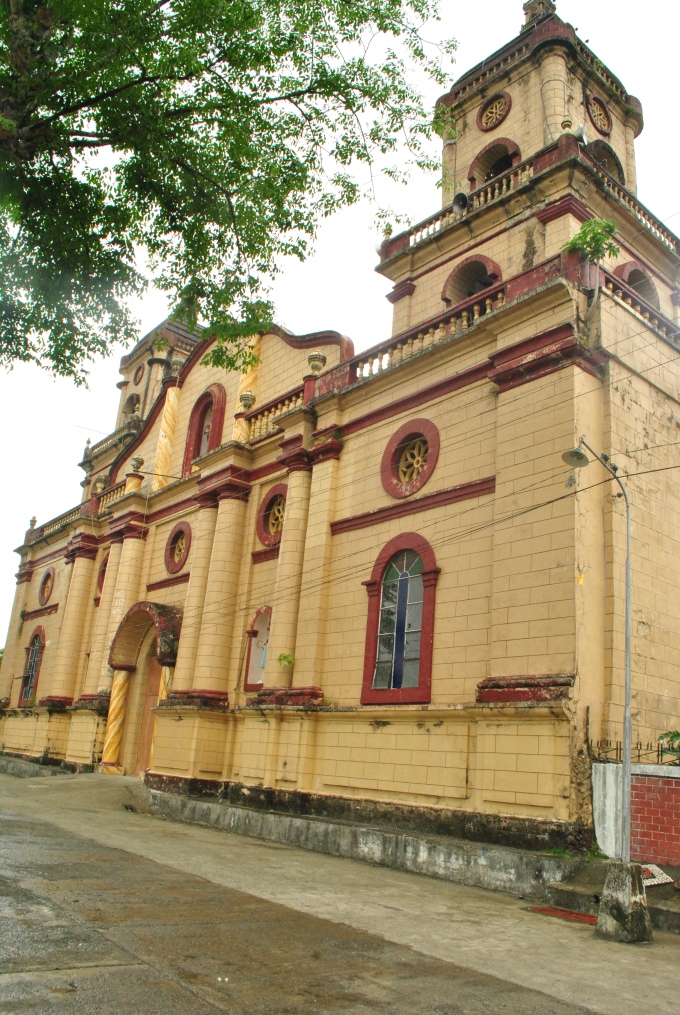
- NICHOLAS DE TOLENTINE PARISH Church in Lambunao, Iloilo is of Baroque architectural style. The first parochial church was constructed under the supervision of Father Jose Lobo in 1875. It was said to be in poor condition since it was situated in a swampy area. It was reconstructed to its present site and was officially inaugurated in 1883. It was finished in 1886. It was made of stones that were quarried in Dingle. Bricks were also used. Its interior is of Tuscan order while the exterior is of Doric order. It was burned by the revolutionaries in 1900 however its walls and belfry were saved. The church was reconstructed.
LADY OF IMMACULATE CONCEPTION PARISH Church in Calinog, Iloilo is of Baroque architectural style. The first church was reconstructed by Father Crescencio Bravo in 1874 and was inaugurated on September 27, 1883. It measured 76 meters in length and 17 meters in width.
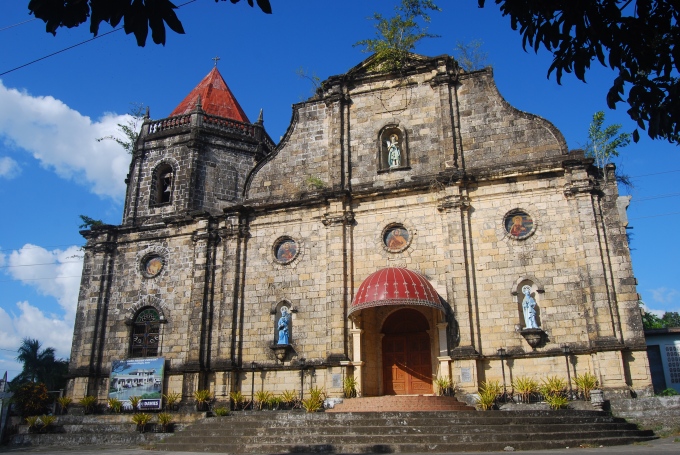
- JOHN THE BAPTIST PARISH Church in Dingle, Iloilo is of Filipino-Baroque architectural style. The first church was constructed in Baong but no records as to who supervised the construction of the church and its convent. The present church was constructed in 1829. It was continued between 1865 and 1874 and completed between 1887-1893. The roof was however destroyed by a typhoon in November 5, 1912. Father Fernando Llorente restored its convent that was however destroyed in 1960. The materials used were granite stones quarried from the mountains of BulabogPuti-an in Dingle and San Enrique in 1829. The church has one unfinished bell-tower that makes it unique from the other neighboring churches. It is elevated by a 9-step stairway with rose windows in its façade. It was used as a Japanese garrison during World War II.

- AUGUSTINE PARISH Church in Dumangas, Iloilo is of Gothic architectural style. The first church was burned sometime between 1620 and 1625. A new church was constructed and finished before 1787 but an earthquake destroyed it. The present church was constructed under the supervision of Father Fernando Llorente in 1887. It was continued in 1893 and finished in 1896. It was known to be one of the best churches in the province during its time and the most artistic in the Philippines. Made of bricks and coral stones, it measured 72 meters in length and 22 meters in width. It was declared by the National Historical Institute as a National Landmark in May of 1983.
RUINS OF THE FIRST STONE CHURCH IN PANAY in Barangay Ermita, Dumangas, Iloilo was built in 1556 under the supervision of Father Martin de Rada. Dumangas was the mission center of Panay when Spanish authorities set foot in Panay. Araut, the old name of the town was where Spanish authorities preached the gospel by the banks of the Jalaud River.
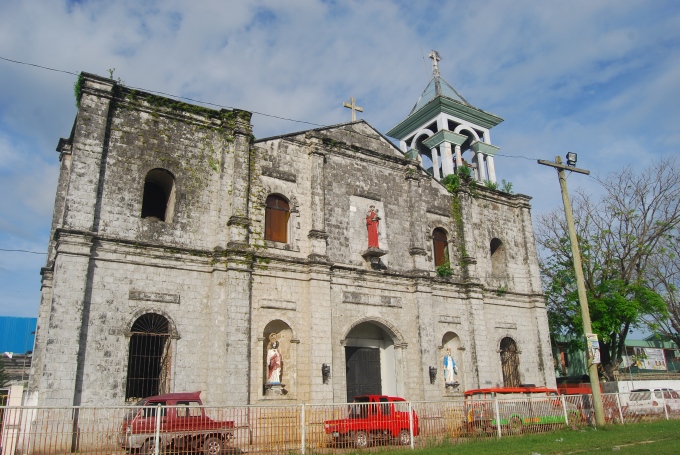
- ANTHONY DE PADUA PARISH Church in Barotac Nuevo, Iloilo is of Neo-Classical architectural design. It was said that the original church of Romanesque architectural style and was built sometime in 1710 and finished in 1750. However in 1758, an earthquake destroyed the church. A second church of coral stone and bricks was reconstructed. A convent was also constructed and both structures were completed sometime in 1802. It was blessed in December 24, 1893. The present church was constructed under the supervision of Father Julian Yturiaga in 1876 but was later on continued by Father Eustaquio Torres until 1882. It was finished in 1888 under the supervision of Father Calixto Gonzales. It is made of stone blocks. The church has two unfinished twin rectangular bell-tower. However, it was burned In December 5, 1912. During World War II the church was used as a garrison by the Japanese Imperial Forces.
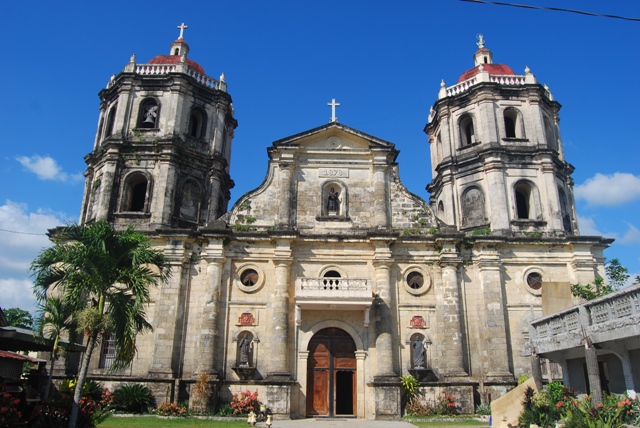
- JEROME PARISH Church in Dueñas, Iloilo is of Baroque - Romanesque architectural style. The first church was made of wood but was destroyed by an earthquake in 1787. The present church was constructed under the supervision of Father Nicolas Gallo in 1878. Materials used were stone and bricks. Its interior of Tuscan design with an exterior of Doric design measured 65 meters in length and 16 meters wide. The church was damaged during World War II and in the 1948 earthquake. The dome and transept were reconstructed in 1982.
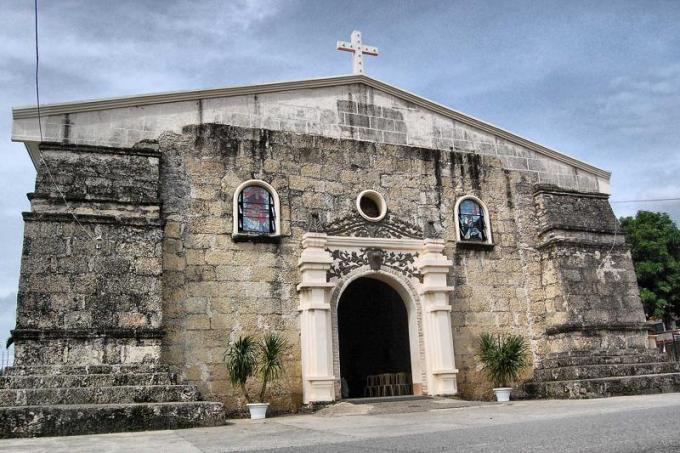
SAN GUILLERMO PARISH Church in Pass City, Iloilo is of Baroque architectural style.The magnificent structure of the first church and convent were built in 1614 under the supervision of Father Alonso Baraona. They were partially damaged by an earthquake in 1612 and 1787. It was reconstructed between 1821 and 1837. More reconstruction was supervised by Father Pedro Ceberio in 1856 and was finished in 1876. However, a powerful typhoon blew its roof in 1932. Massive buttresses support its front and back walls. An added attraction of the present church is its Garden of the Saints or “Jardindelos Santos.”
PAROLA in Calabazas Island, Ajuy, Iloilo was was said to have been built in 1894. It was listed among the 27 major Spanish lighthouses in the Philippines. It was described as a "white iron tower” measuring 45 feet in height with a focal plane of 100 feet. The date given is 1894. The light was replaced by a modern concrete tower that looms over the ruins of the Spanish keeper's house. The original tower may well have been demolished.
PAROLA in Gigantes Norte, Carles, Iloilo was said to have been built in 1895. It was described as a gray “tower” with a focal plane of 78 feet or 23 meters. It was included as one of the major Spanish lighthouses in the Philippines.

